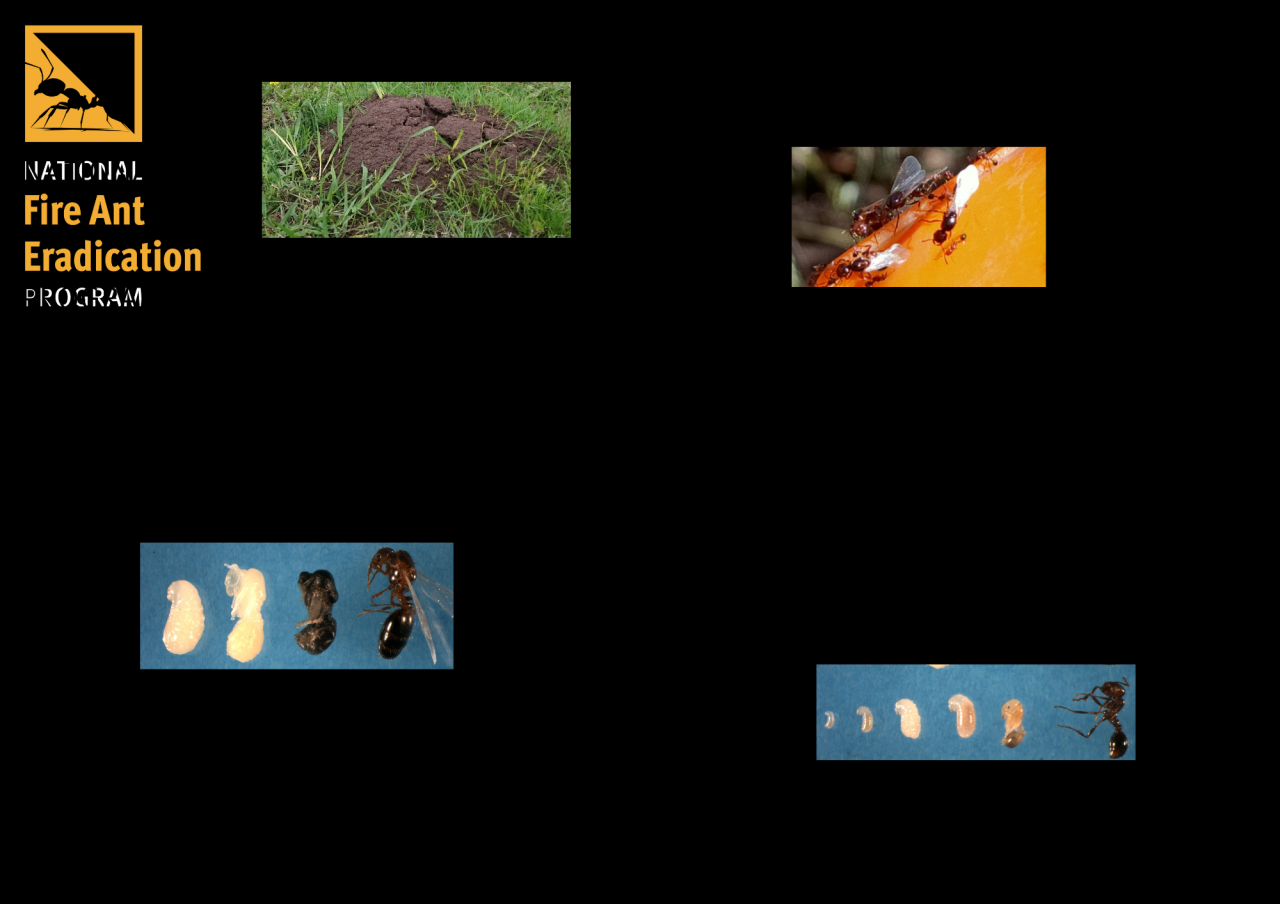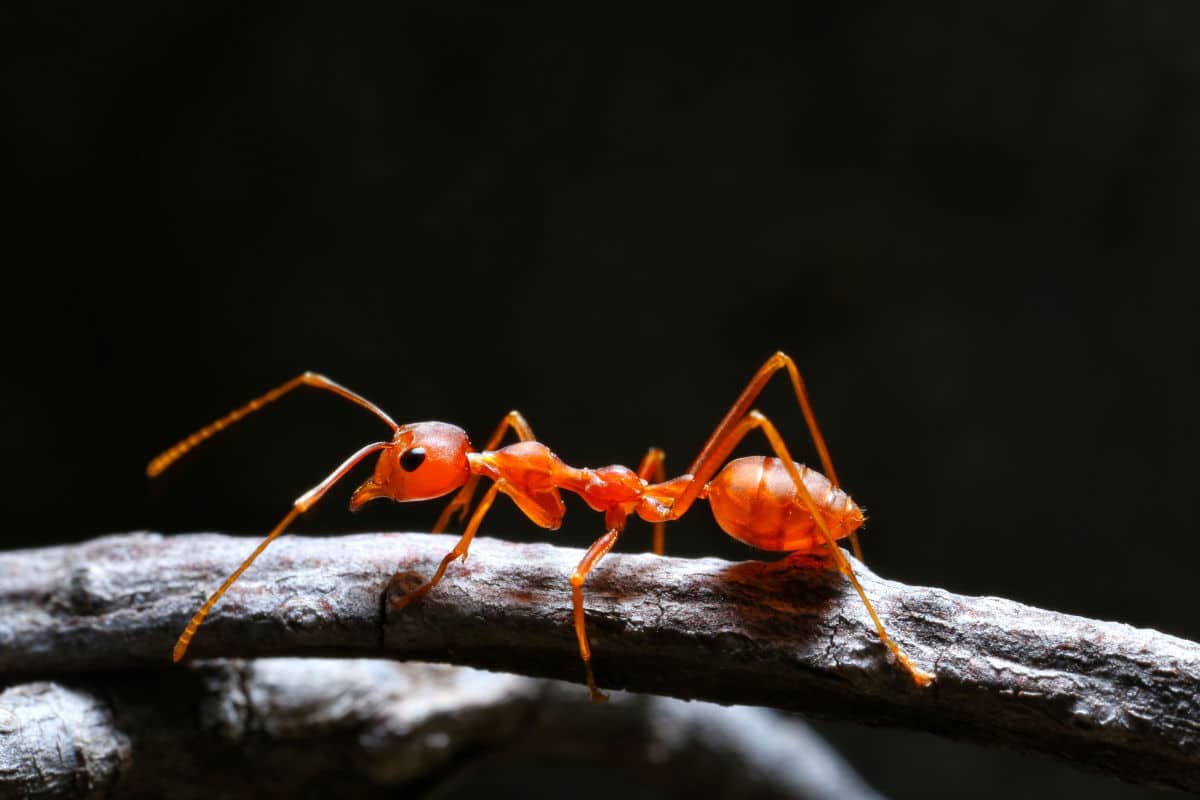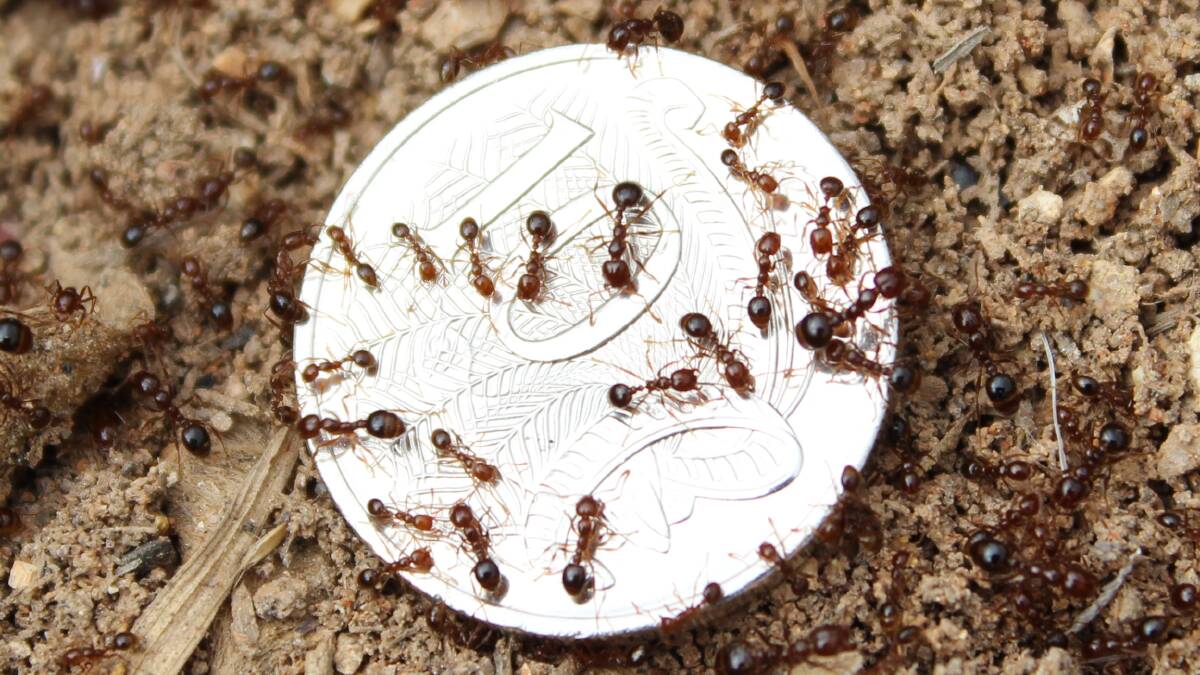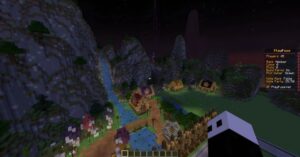Fire Ants Jimboomba: Invasive Pests Disrupting Ecosystem and Public Health. Fire ants, a formidable invasive species, have established a stronghold in Jimboomba, posing significant threats to the local ecosystem and public health. This article delves into the multifaceted impacts of fire ants, exploring their biology, ecological consequences, management strategies, and community involvement in mitigating their presence.
With their aggressive behavior and painful stings, fire ants have become a nuisance to residents and a menace to native wildlife. Their presence disrupts the delicate balance of the Jimboomba ecosystem, leading to a decline in biodiversity and altering the food chain.
Taxonomy and Habitat

Fire ants in Jimboomba, Australia, belong to the species Solenopsis invicta, scientifically classified under the family Formicidae, order Hymenoptera. These ants are native to South America and were accidentally introduced to Australia in the 1990s, where they have since become an invasive species.
Fire ants typically inhabit open, disturbed areas such as parks, gardens, roadsides, and wastelands. They build their nests in the ground, often under rocks, logs, or other objects that provide shelter and protection from predators.
Fire ants in Jimboomba are a pesky problem, but don’t let them ruin your day! If you’re looking for a way to escape the ants and enjoy some entertainment, check out Groundhog Day Streaming Australia: A Comprehensive Guide . This guide has everything you need to know about streaming the classic film in Australia.
And once you’re done watching, you can come back and deal with those pesky fire ants in Jimboomba.
Distribution
Fire ants have a wide distribution in Jimboomba and the surrounding areas. They are known to infest both urban and rural areas, posing a significant threat to local ecosystems and human populations.
Impact on Ecosystem and Biodiversity
Fire ants pose a significant threat to the native flora and fauna in Jimboomba. Their aggressive nature and ability to establish large colonies disrupt the ecosystem’s balance, leading to detrimental effects on biodiversity.
Negative Impacts on Native Flora
Fire ants have a voracious appetite and feed on a wide range of vegetation, including native plants. Their foraging behavior can damage leaves, stems, and roots, reducing plant growth and reproductive success. This can alter the composition of plant communities, favoring non-native and invasive species that are more tolerant of fire ants.
Negative Impacts on Native Fauna
Fire ants also prey on native animals, including insects, reptiles, amphibians, and birds. Their painful stings can kill small animals outright or weaken them, making them vulnerable to predators or disease. The reduction in native fauna can disrupt food chains and ecological interactions, affecting the overall health of the ecosystem.
Case Study: Decline of Native Ant Species
In Jimboomba, fire ants have contributed to the decline of several native ant species. These native ants play important roles in the ecosystem, such as aerating the soil, dispersing seeds, and controlling insect populations. The loss of native ants can have cascading effects on other organisms that rely on them for food or habitat.
Management and Control
Managing and controlling fire ant populations in Jimboomba is crucial to mitigate their adverse effects on the ecosystem and human health. Several effective methods can be employed to combat these invasive pests.
Biological Control Agents
Biological control agents, such as parasitic wasps and flies, can be introduced to target specific stages of the fire ant life cycle. These natural enemies help suppress fire ant populations by reducing their reproductive capacity and overall abundance.
Chemical Treatments
Chemical treatments, including baits and insecticides, can be applied to eliminate fire ant colonies. Baits containing slow-acting toxins are effective in targeting queen ants, while insecticides can be used to kill individual ants and disrupt colony activity.
Fire ants have been spotted in Jimboomba, posing a threat to the local ecosystem. These invasive pests can cause painful stings and even trigger allergic reactions. If you encounter fire ants, avoid contact and report them to the authorities. Meanwhile, let’s take a moment to acknowledge Quenlin Blackwell , a rising star in the entertainment industry.
Her captivating performances have left a lasting impression on audiences worldwide. Now, back to the topic of Fire Ants Jimboomba, it’s crucial to take precautions and work together to eradicate these harmful insects.
Habitat Modification
Modifying the habitat to make it less favorable for fire ants can help reduce their presence. This includes removing vegetation and debris that provide nesting sites, sealing entry points into buildings, and eliminating moisture sources.
Public Health and Safety
Fire ant stings and bites can cause significant health risks. These insects inject a venomous alkaloid called solenopsin, which triggers an inflammatory response in humans.
The severity of the reaction varies depending on the individual’s sensitivity and the number of stings received. Some common symptoms include intense pain, itching, swelling, and redness. In severe cases, fire ant stings can lead to anaphylaxis, a potentially life-threatening allergic reaction.
Preventing Fire Ant Encounters, Fire Ants Jimboomba
To prevent fire ant encounters, it’s important to take the following precautions:
- Avoid disturbing fire ant mounds.
- Wear protective clothing, such as long pants and closed-toe shoes, when working in areas where fire ants are present.
- Keep your lawn and garden well-maintained to reduce the likelihood of fire ants nesting.
- Inspect outdoor furniture and equipment before using them.
- Be aware of fire ant activity in your area and take appropriate precautions.
Treating Fire Ant Stings and Bites
If you are stung or bitten by a fire ant, it’s important to treat the area immediately to minimize the risk of infection and allergic reactions:
- Wash the affected area with soap and water.
- Apply a cold compress to reduce swelling and pain.
- Take an antihistamine to reduce itching and swelling.
- If you experience severe pain, swelling, or difficulty breathing, seek medical attention immediately.
By following these guidelines, you can help prevent and treat fire ant encounters, ensuring your health and safety.
Community Engagement and Awareness

Community involvement is paramount in the effective management of fire ants. Engaged communities can contribute to early detection, rapid response, and sustained control efforts.
Successful educational programs and outreach initiatives empower communities with the knowledge and skills necessary to identify, report, and control fire ants. These programs often involve partnerships between government agencies, schools, and community organizations.
Examples of Educational Programs and Outreach Initiatives
- Fire Ant Identification and Control Workshops:These workshops provide hands-on training for community members on identifying fire ants, understanding their biology, and implementing effective control measures.
- School-Based Education Programs:Incorporating fire ant education into school curricula helps raise awareness among students and their families, fostering responsible environmental stewardship.
- Community Outreach Campaigns:Targeted outreach campaigns utilize various media platforms, such as social media, local newspapers, and community events, to disseminate information about fire ant management and encourage community involvement.
By engaging communities in fire ant management, we foster a sense of ownership and responsibility, leading to more effective and sustainable control efforts.
Wrap-Up: Fire Ants Jimboomba

Addressing the fire ant problem in Jimboomba requires a multifaceted approach involving effective management strategies, community engagement, and public awareness. By implementing integrated pest management techniques, promoting biological control, and educating the community about prevention measures, we can mitigate the impact of these invasive pests and restore the ecological integrity of Jimboomba.
FAQs
What are the health risks associated with fire ant stings?
Fire ant stings can cause severe pain, itching, and swelling. In some cases, they can lead to allergic reactions, including anaphylaxis, which can be life-threatening.
How can I prevent fire ant stings?
To prevent fire ant stings, avoid disturbing their nests, wear protective clothing when working outdoors, and keep your lawn and garden free of debris that may attract ants.
What are the effective methods for controlling fire ant populations?
Effective methods for controlling fire ant populations include using bait stations, applying chemical treatments, and introducing biological control agents such as parasitic wasps.





Leave a Comment